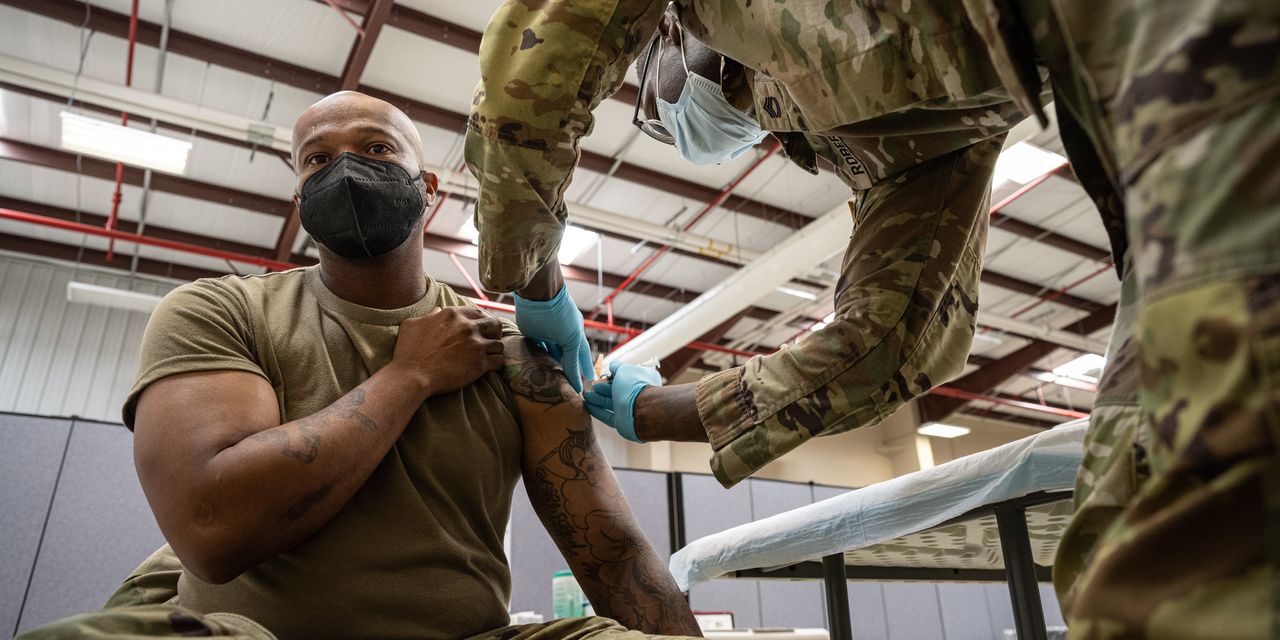A bill to rescind the COVID vaccine mandate for members of the U.S. military and to provide nearly $858 billion for national defense passed the Senate on Thursday and is headed to President Joe Biden to be signed into law.
An amendment from Republican Sens. Ron Johnson of Wisconsin and Ted Cruz of Texas was defeated. It would have allowed for the reinstatement of service members who were discharged for failing to obey an order to receive the COVID-19 vaccine and compensate them for any pay and benefits lost as a result of the separation.
Opponents worried about the precedent of rewarding members of the military who disobeyed an order. Rhode Island Sen. Jack Reed, the Democratic chair of the Senate Armed Services Committee, said orders are not suggestions — they are commands.
“What message do we send if we pass this bill? It is a very dangerous one,” Reed said. “What we’re telling soldiers is, ‘If you disagree, don’t follow the order, and then just lobby Congress, and they’ll come along and they’ll restore your rank, or restore your benefits, or restore everything.’”
Data from the Centers for Disease Control and Prevention released on Friday found that new omicron subvariants that emerged just weeks ago continued to replace the BA.5 variant in the U.S. in the latest week.
BQ.1 and BQ.1.1 accounted for 69.1% of new COVID cases in the week through Friday, while BA.5 accounted for 10%. Last week, the two subvariants accounted for 67.9% of all cases, while BA.5 accounted for 11.5%.
In the New York region, which includes New Jersey, Puerto Rico and the U.S. Virgin Islands, the numbers were even higher, with BQ.1 and BQ.1.1 accounting for 70.2% of new cases, while BA.5 accounted for 9.6%.
When another subvariant, XBB, is included in the tally, the three accounted for 82.7% of all new cases in the region.
U.S. known cases of COVID were still trending higher at the end of the week, along with hospitalizations, fatalities and test-positivity rates.
The daily average for new cases stood at 64,889 on Thursday, according to a New York Times tracker, up 33% from two weeks ago.
Cases are climbing in 43 states, led by South Carolina, where they are up 114% from two weeks ago. Cases have more than doubled in Rhode Island and Mississippi, as well as in American Samoa.
The average for hospitalizations was up 19% to 40,155, led by Texas, where hospitalizations are up 80% from two weeks ago, and Vermont, where they are up 62%.
The number of deaths was up 50% to 373.
Coronavirus Update: MarketWatch’s daily roundup has been curating and reporting all the latest developments every weekday since the coronavirus pandemic began
Other COVID-19 news you should know about:
• Public attitudes toward vaccine requirements for schoolchildren have eroded during the pandemic, according to a new study from the Kaiser Family Foundation. The study found just seven in 10 adults, or 71%, say say healthy children should be required to get the MMR vaccine — which protects against measles, mumps and rubella — in order to attend public schools, down from 82% who said the same in an October 2019 Pew Research Center poll. Almost three in 10, or 28%, say parents should be allowed to decide not to vaccinate their children even if it creates health risks for others, up from16% in 2019. “Among Republicans and Republican-leaning independents, there has been a 24-percentage-point increase in the share who hold this view (from 20% to 44%),” the study found.
• China’s government on Friday ordered rural areas to prepare for the return of migrant workers during the Chinese New Year holiday season in hopes of preventing a major surge in COVID cases in communities with limited medical resources, the AP reported. People returning home for the holiday must wear masks and avoid contact with elderly people, and village committees must monitor their movements, the guidelines said, but there was no mention of the possibility of isolation or quarantining. The news comes a week after China announced the easing of its strict zero-COVID measures.
• California will stop making companies pay employees who can’t work because they caught the coronavirus while on the job, the AP reported separately. For the past two years, California workplace regulators have tried to slow the spread of the coronavirus by requiring infected workers to stay home while also guaranteeing they would still be paid. But Thursday, the California Occupational Safety and Health Standards Board voted to end that rule in 2023 — in part because the rule has become harder to enforce.
Here’s what the numbers say:
The global tally of confirmed cases of COVID-19 topped 652 million on Friday, while the death toll rose above 6.66 million, according to data aggregated by Johns Hopkins University.
The U.S. leads the world with 99.8 million cases and 1,087,014 fatalities.
The Centers for Disease Control and Prevention’s tracker shows that 228.8 million people living in the U.S., equal to 68.9% of the total population, are fully vaccinated, meaning they have had their primary shots.
So far, just 44.1 million Americans have had the updated COVID booster that targets the original virus and the omicron variants, equal to 14.1% of the overall population.
